Episode 30 Production Report
Table of Contents
For episode 30, I decided to create a speechbubble-free episode, a tradition I've maintained in the webcomic for every 5th episode (5, 10, 15, 25, 30, etc.). I crafted a simple story for this episode, and this time, I chose to focus on Carrot as the central character.
Storyboard
For the storyboard, I experimented with drawing directly on the final page format using a thick and very grainy brush preset. However, this approach had an unexpected and somewhat perverse effect: it was tempting to simply keep the drawings as they were and color directly underneath them.
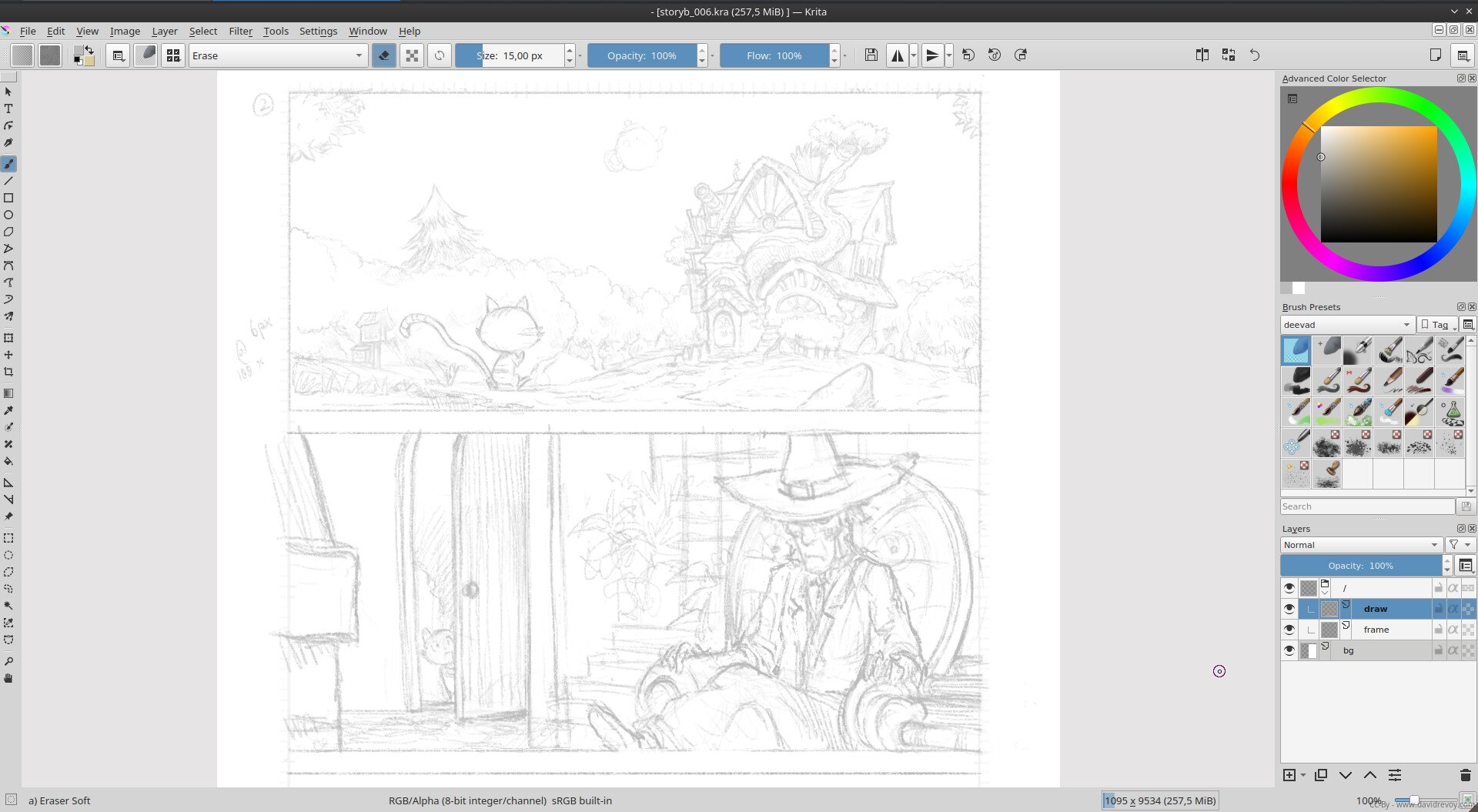 Screenshot while storyboarding
Screenshot while storyboarding
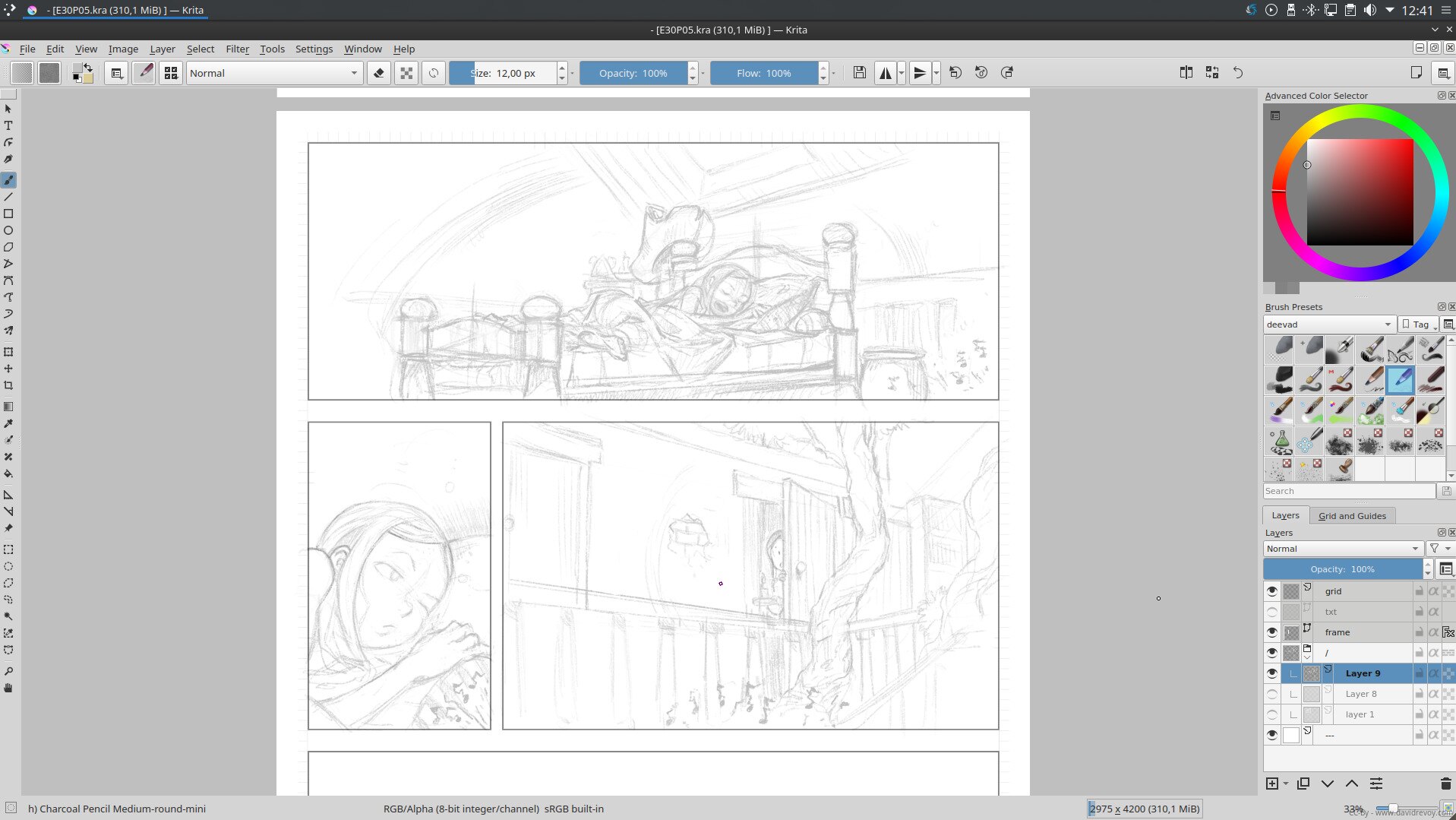
Screenshot while storyboarding
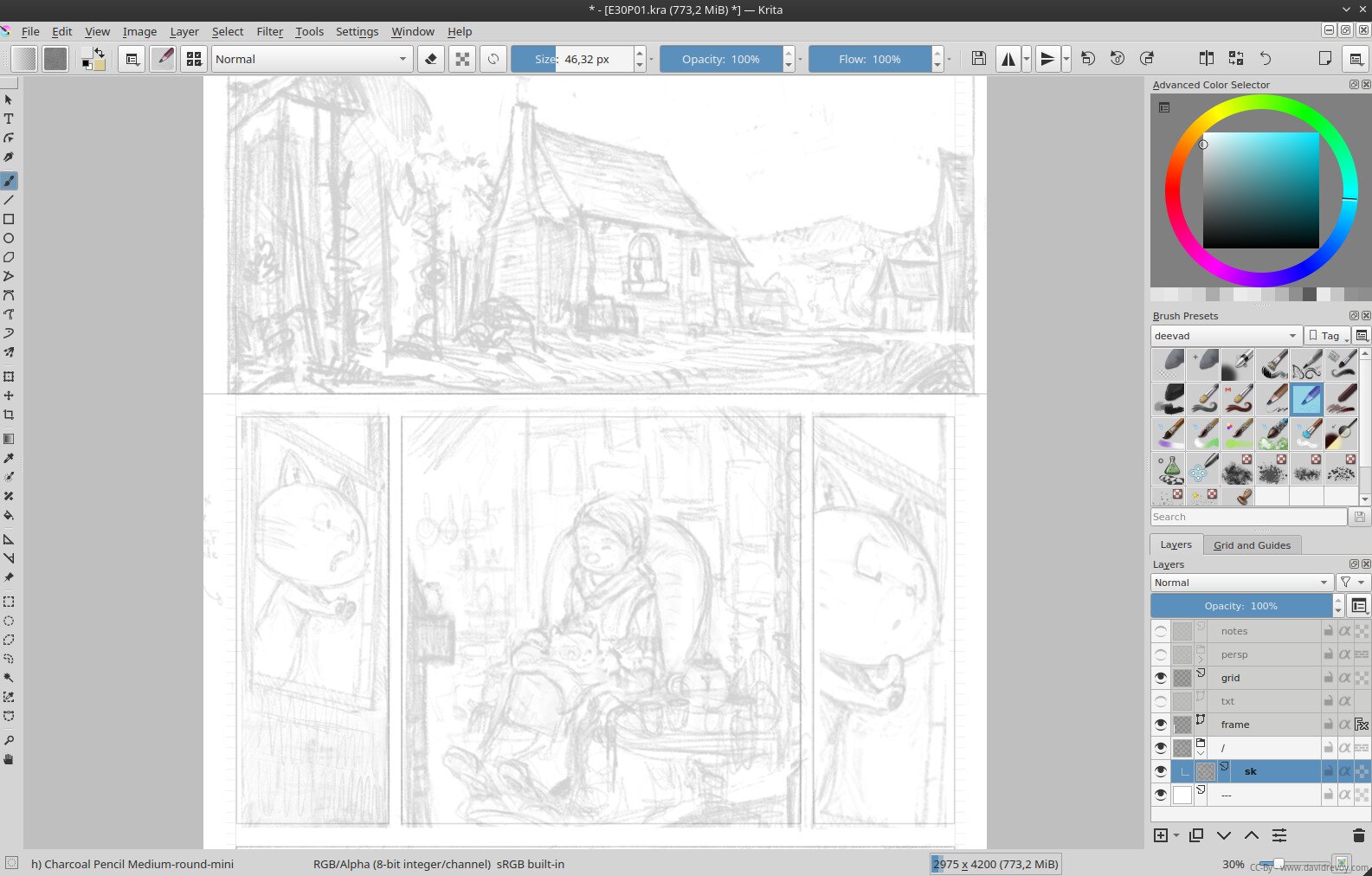
Screenshot while storyboarding
Drawing
When I realized that my storyboard lines weren't detailed enough, I started re-drawing them with a thinner pencil brush preset. During this production, I discovered a useful trick: using mid-gray to draw the backgrounds and black to draw the characters. This approach created a clear distinction between the characters and the background, and I found that it worked quite well.
I also made a conscious effort to focus on proportion and perspective in this episode, which was particularly challenging given the number of indoor panels.
The Color flat issue
However, I soon encountered an issue when I started to flat my colors: the brush preset I had used as a pencil was too grainy, and Krita's Colorize-Mask feature was unable to handle the texture of the pencil lines. I was disappointed, as I had hoped to automate part of the process using Colorize-Mask, but instead, I had to manually flat the entire episode.
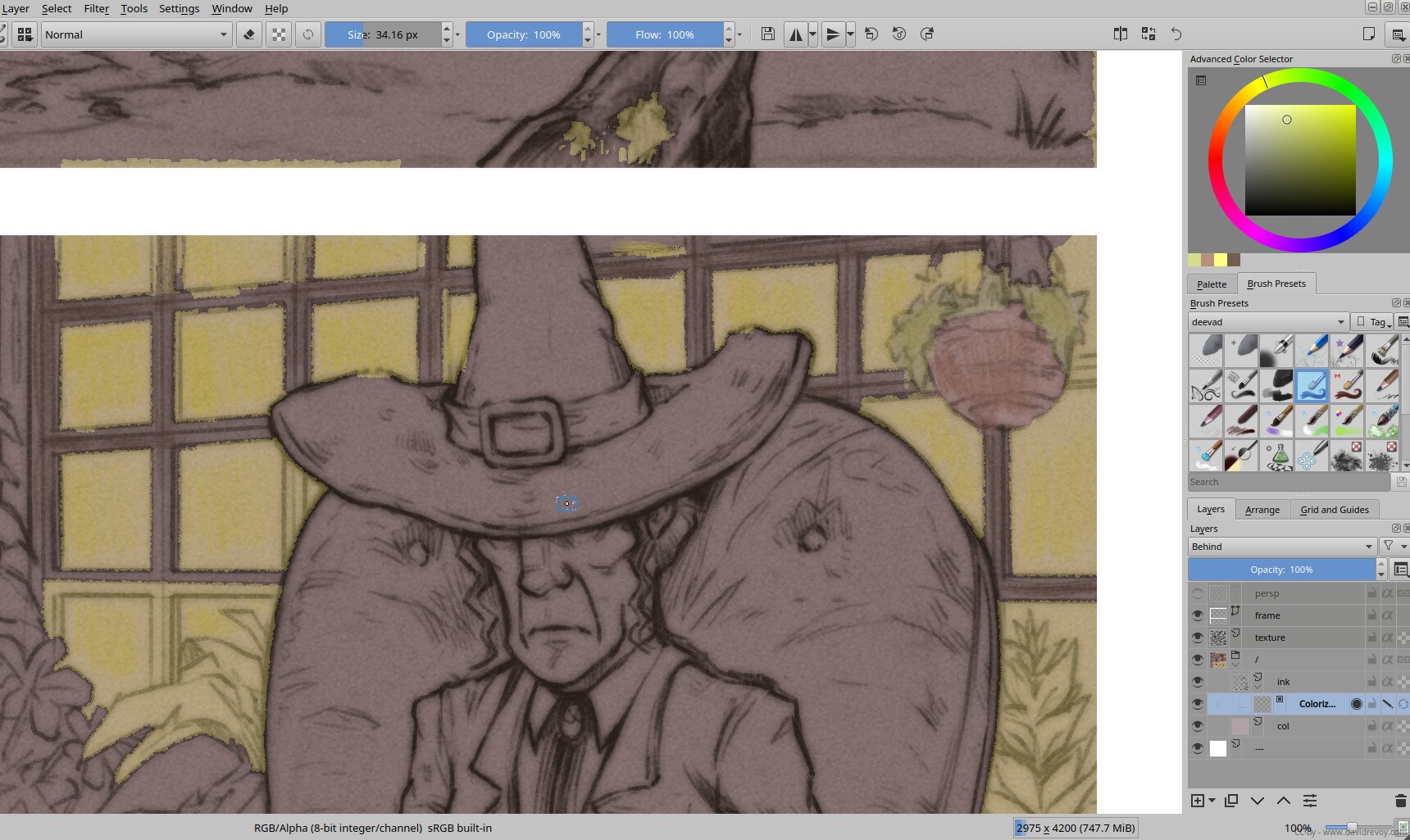
A zoom in the Colorize Mask artifact: many issues
Coloring struggles
Before resorting to flat coloring manually, I attempted to "brute force" the coloring on the first page by painting directly underneath my lines.
However, this approach proved to be a mistake, as it required a significant amount of cleanup to achieve good shapes and prevent colors from bleeding outside the thin line art. After experimenting with this technique for two pages and exhaust myself with all the hours necessary to paint this way, I decided to switch to a different approach.
A better method
That's how I started to think of a more robust workflow, which I named "Sel, Paint, Post." This workflow is inspired by working with 3D software, and here's how it works:
- "Sel" is the flat layer, where I paint flat areas with a hard brush. I try to color it as if the scene were illuminated by bright, cold neon light from all directions, revealing the base color of the materials.
- Once the "Sel" layer is complete, I duplicate it and rename it "Paint." Using the magic wand tool (with a 2-pixel grow and slight smoothing in the tool options), I select each island of color one by one and apply basic shading. I don't worry about cast shadows or ambient light at this stage; instead, I focus on a simple, smooth "Gouraud Shading" (a term borrowed from 3D rendering), which gives each flat area a sense of volume. By duplicating the "Sel" layer, I can select and paint each island directly, without considering the overall picture. This approach allows me to inflate each piece of the picture with volume, piece by piece.
- Once the work on the "Paint" layer is complete, I duplicate it again. This time, I can experiment with filters to adjust the colors to the final ambiance (for example, shifting the entire scene to a dark blue to create a night scene). I also add cast shadows, specular light reflections, and volumetric and particle effects.
With this method, I can work efficiently and maintain consistent productivity. However, it's also a very boring, repetitive, and industrial process. Don't expect any artistic "happy accidents" to occur with a workflow like this.
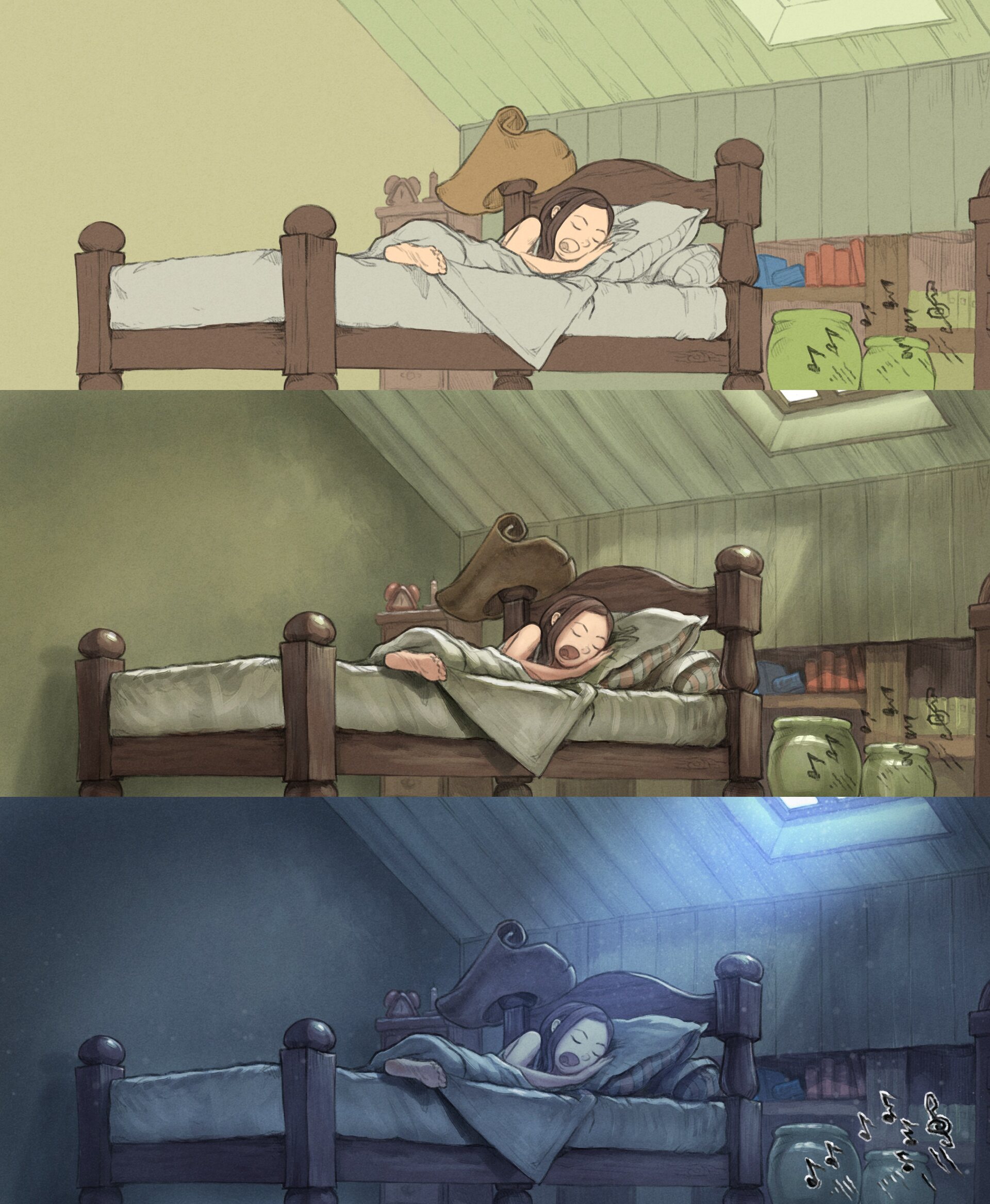
Example of the Sel, Paint, Post workflow
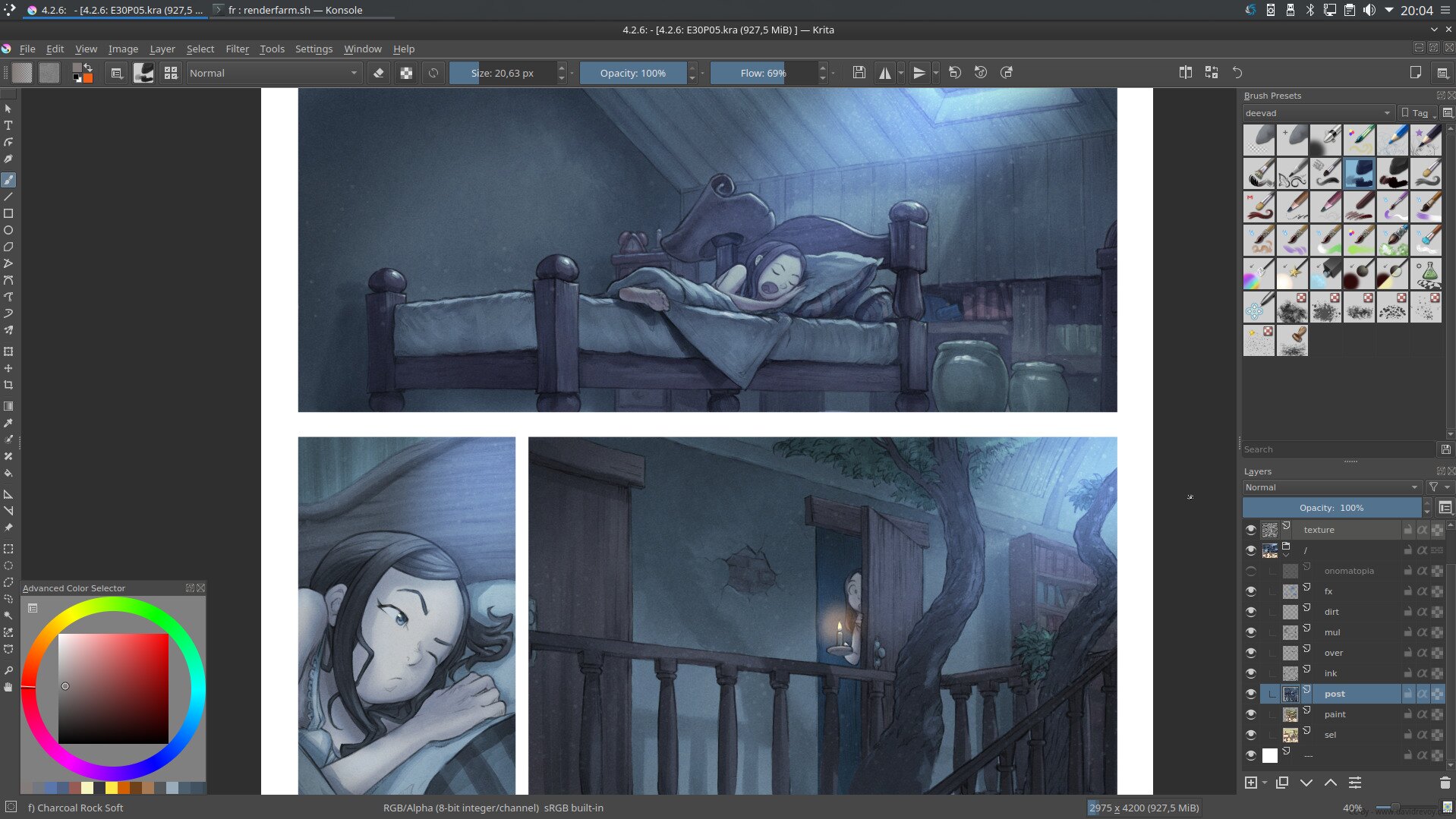
Screenshot while coloring with the Sel,Paint,Post workflow
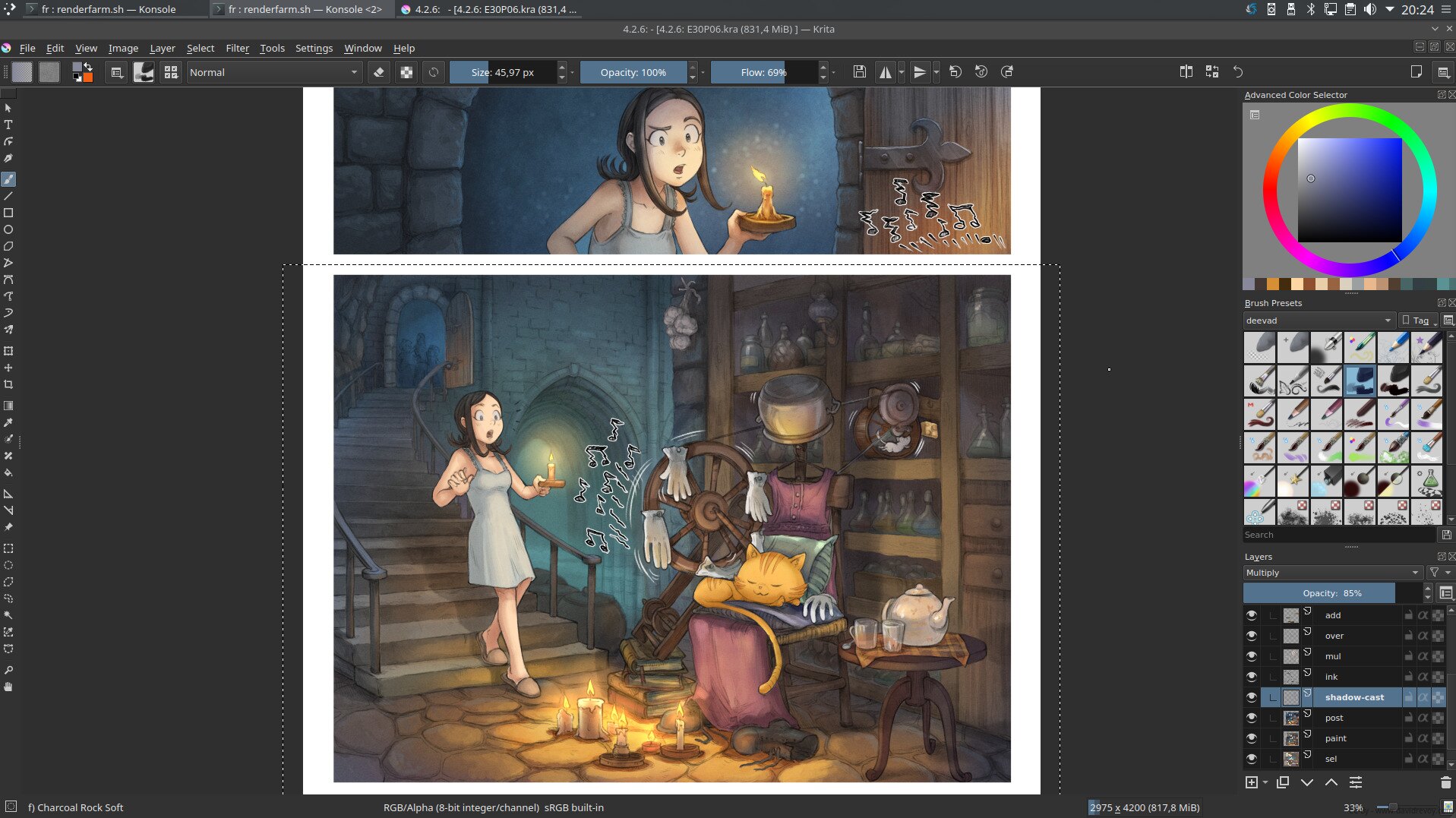
Screenshot while coloring with the Sel,Paint,Post workflow
Post-mortem
I'll always remember this episode as the one where I struggled the most with the rigidity of having created overly precise and thin line-art.
On the other hand, I'll also recall this difficulty as the catalyst that inspired me to develop the "Sel, Paint, Post" method. This method has since been applied to numerous projects, including the MiniFantasyTheater comic series.


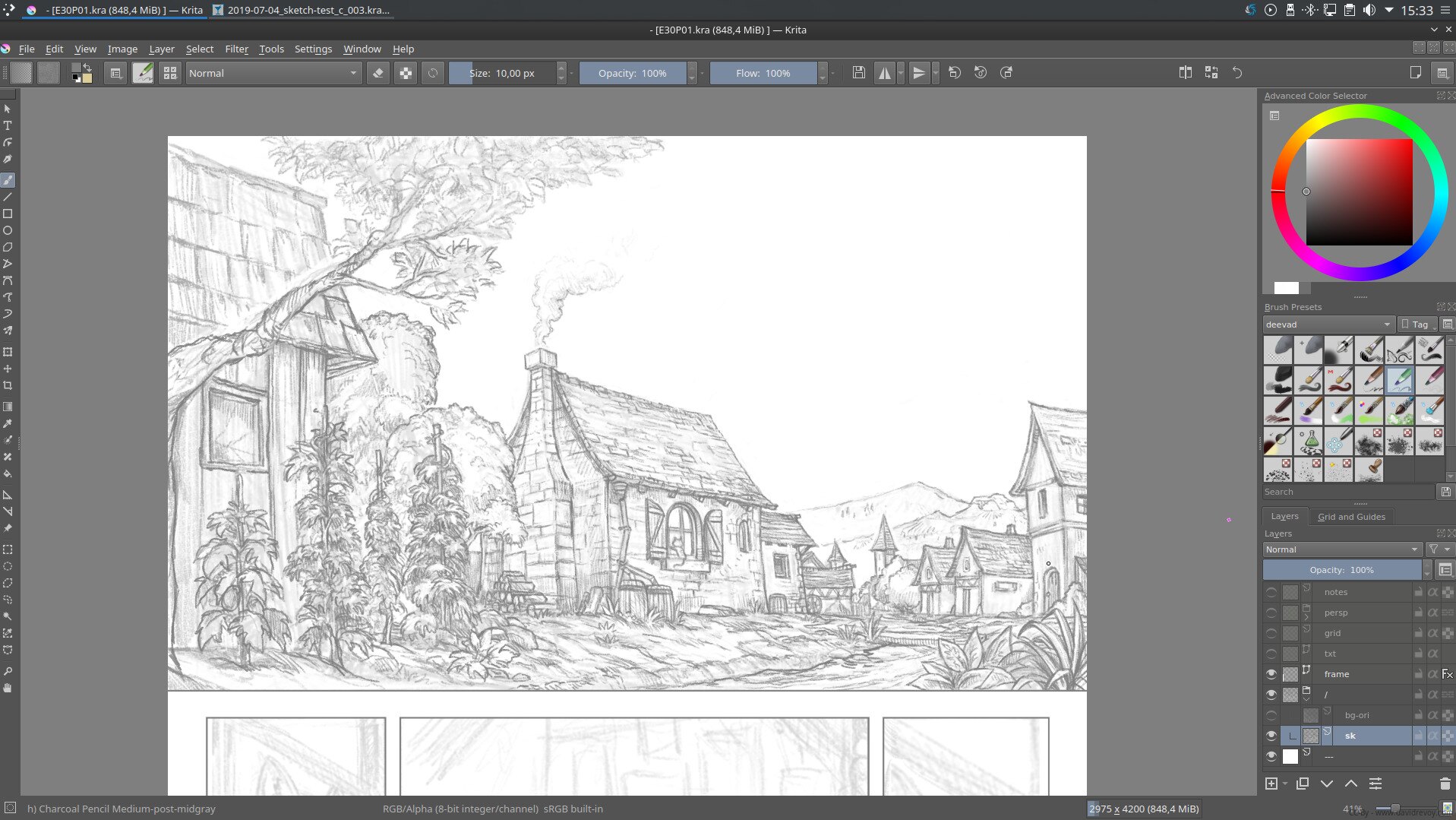
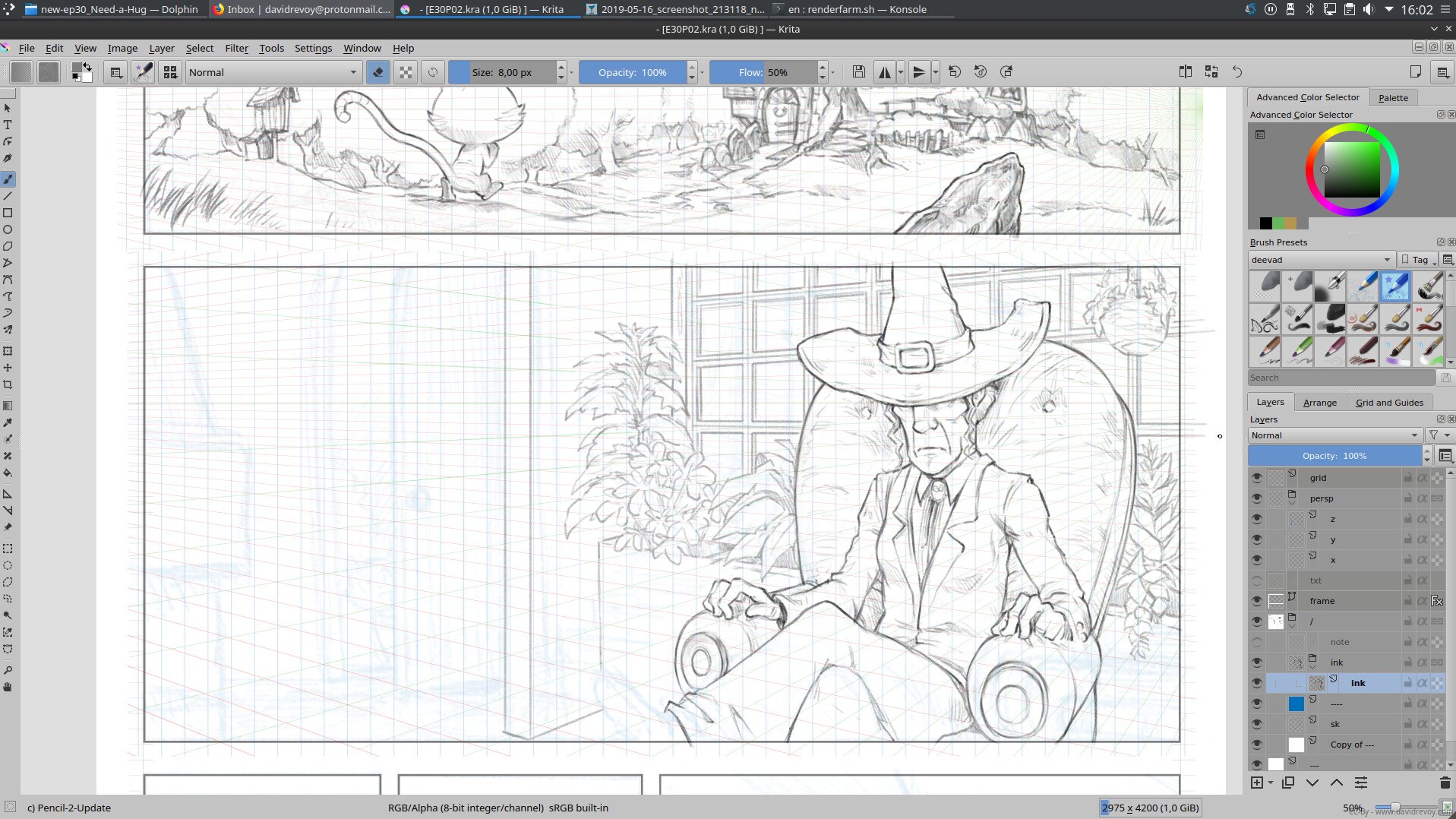
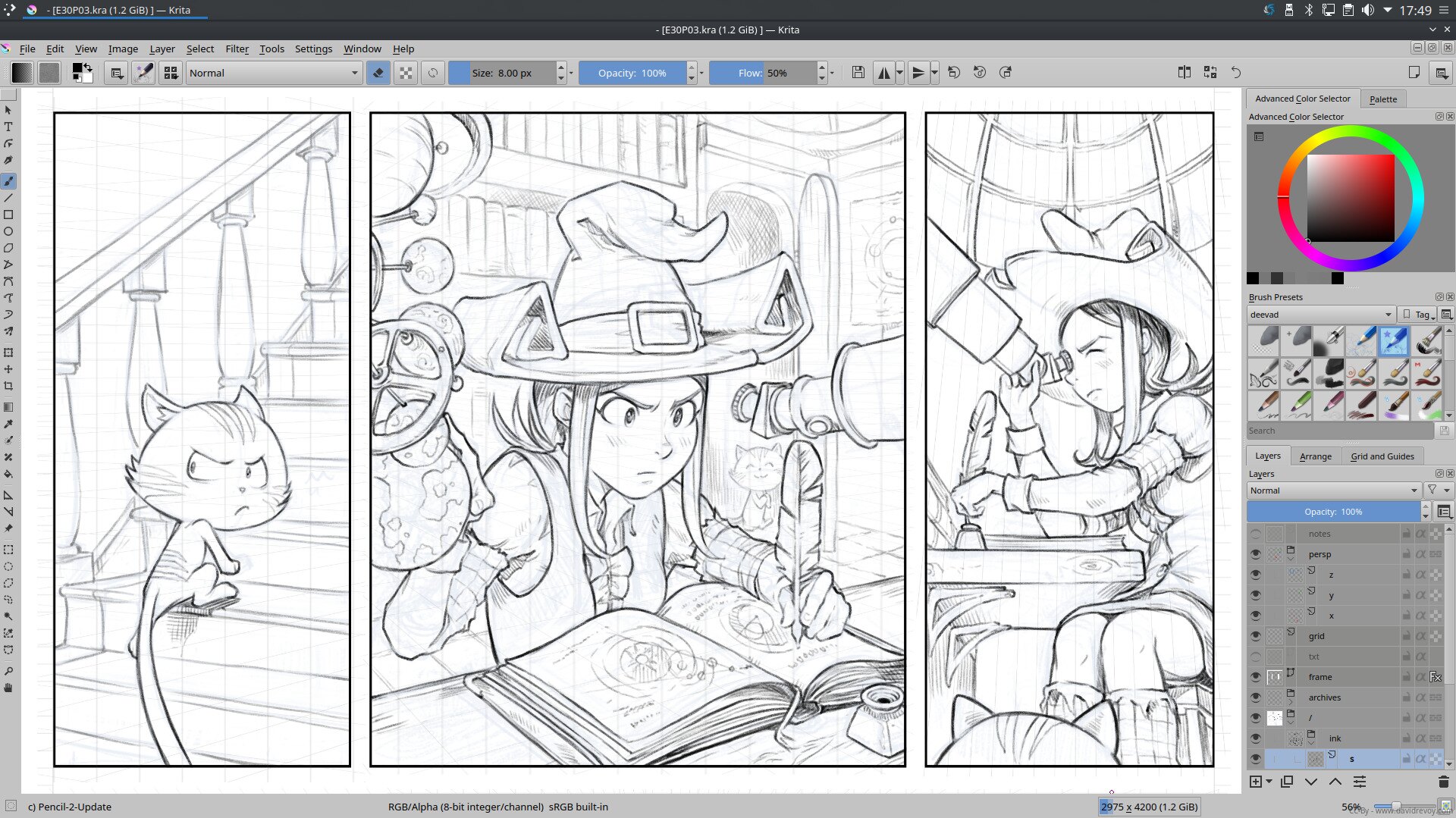
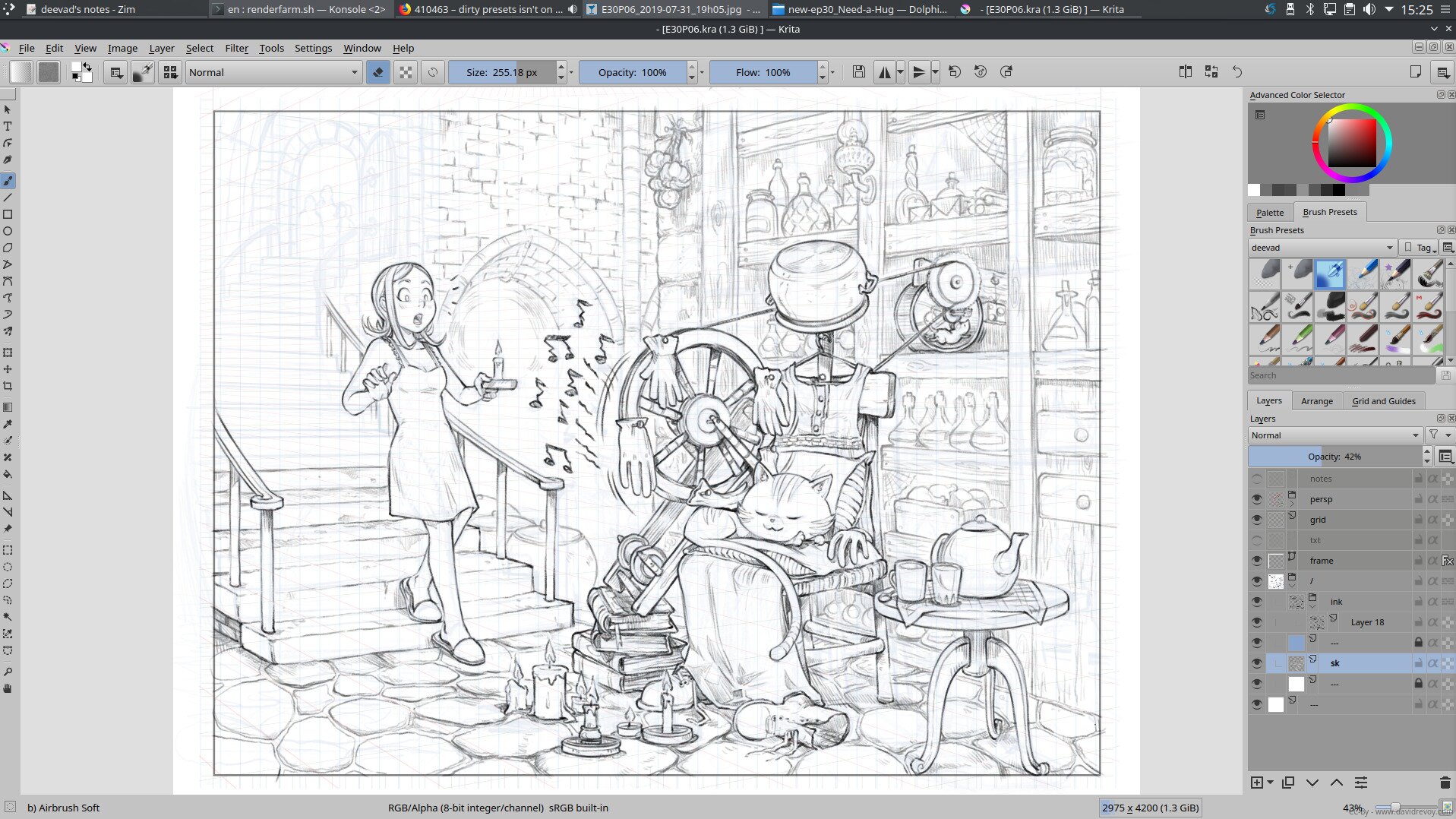
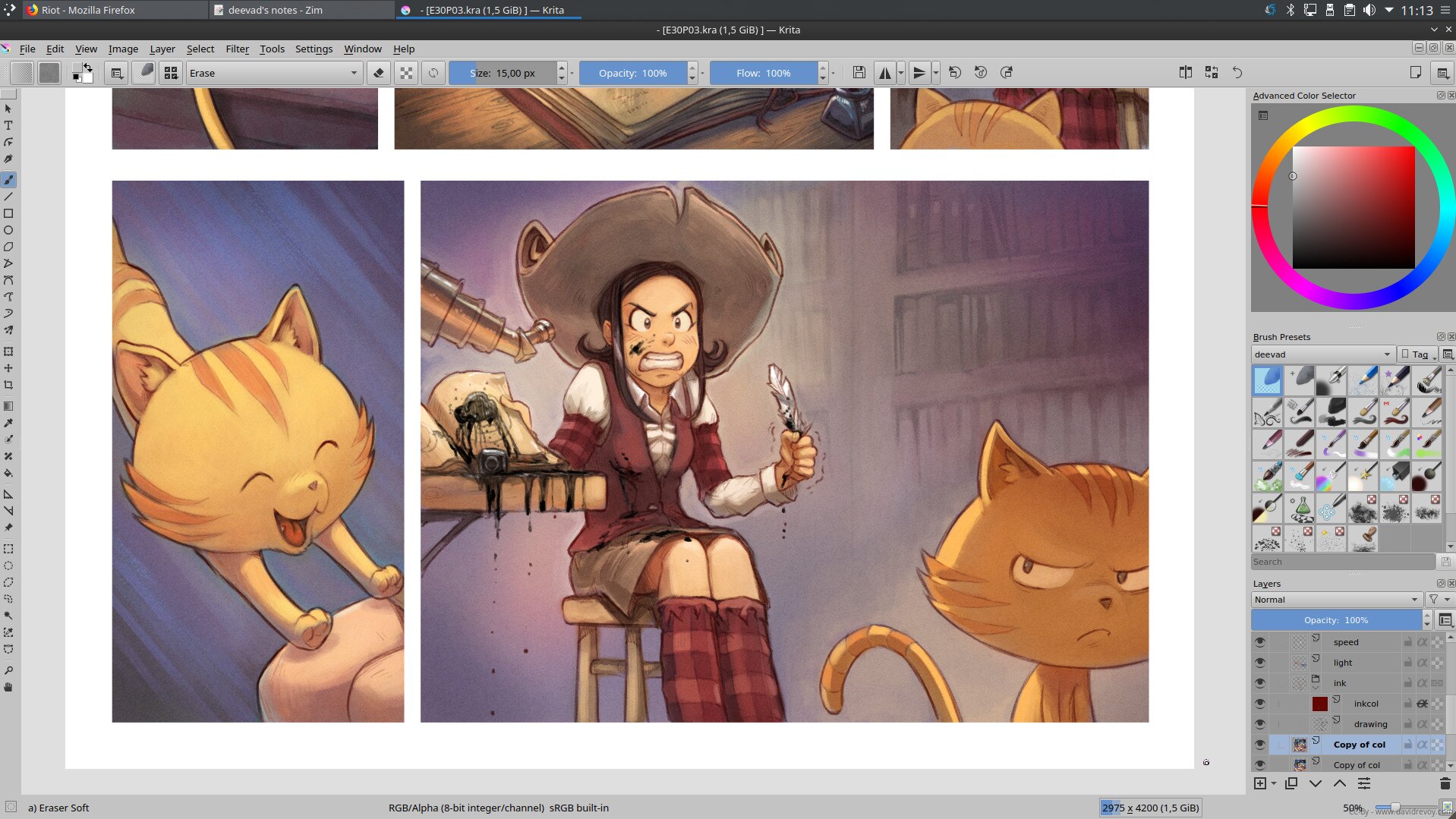
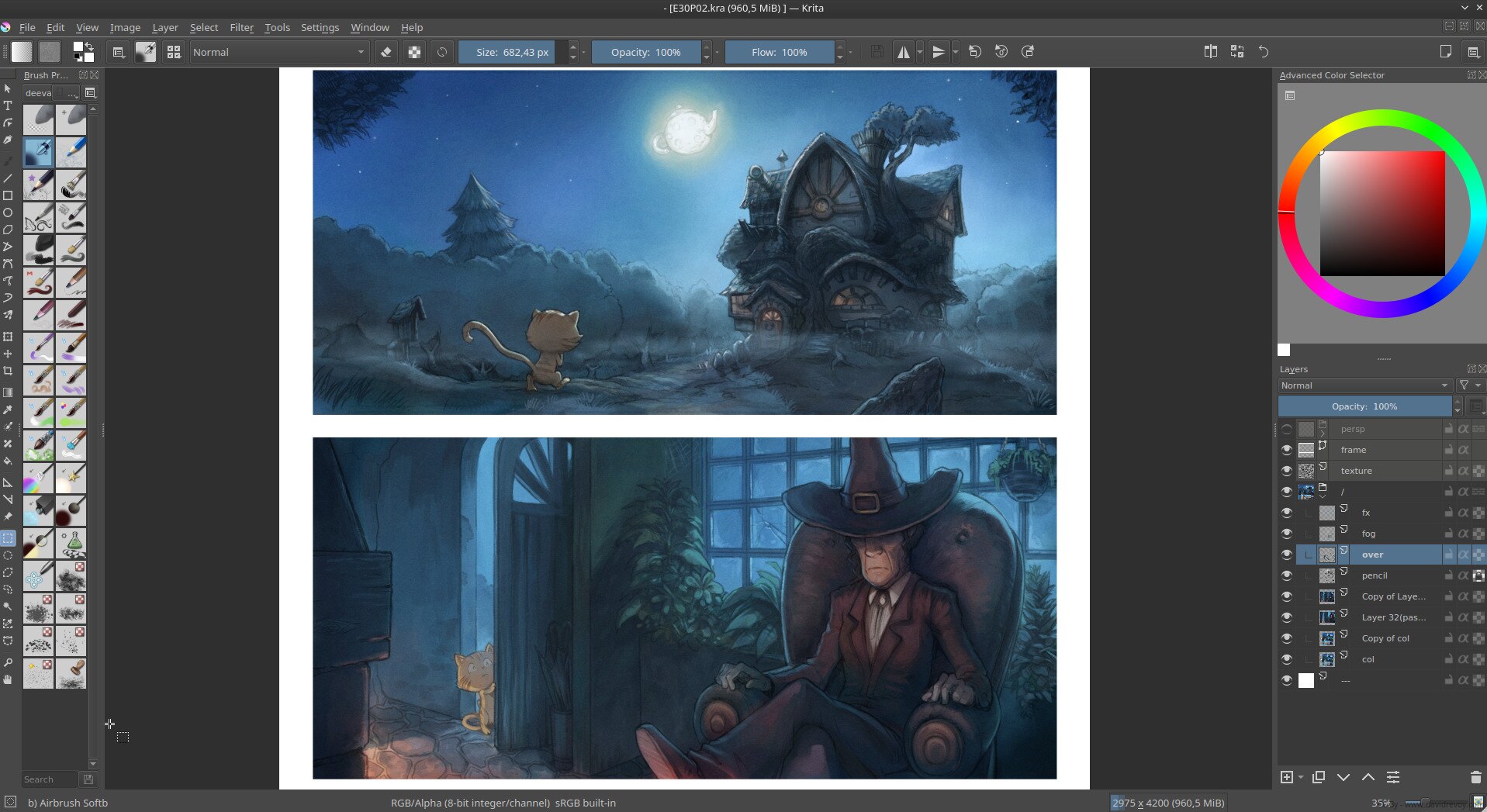
3 comments
I love it!!!!!! I really like the silent episode tradition and it seems like this might be the best one yet. Carrot is so adorable.
I have one remark (I hope it's okay I'm writing it here, I don't have a github account yet): I'm not sure, but something about the beginning of the story kinda makes it look like Carrot still doesn't know them, which was a little confusing. Perhaps showing him leaving the house in the beginning could have made it clearer. But maybe it's just me; no one else wrote anything about it.
Regarding the name: maybe "The Warmth of a Cuddle"?
Hey, thanks for the nice word and the feedback; and no problem to give feedback here.
That's a good point, especially for the total hypothetical new comer to the series who have no idea of the pre-established relation between Pepper&Carrot and the three godmothers of Pepper. I think I can assume this detail is ok for an episode 30; but I'll have to really work on getting the villager woman and her cat visually really different; also the house and village. Color and details will probably solve that.
Thanks for the title; it's a good one and I like how it has potential to lead reader out of track with the word 'warmth' ; expecting something with more fire, or more chimney involved as a twist (because I know part of the audience prepare themselves for a twist while reading, and are often disapointed if they can guess it on the way).
I'm glad you liked it! And yes, I think at this point it's a good idea to assume readers are familiar with the story. It adds depth to the comic and gives a feeling of a 'reward' to consistent readers.
By the way, I was really sad to hear you had to deal with anxiety and doubts, and that 4 members left the project. I hope you are doing better now. Just so you'd know, this comic is a real source of happiness for me, and I'm really really glad you decided not to give up on it.
Good luck and all the best :)
Post a reply
The comments on this article are archived and unfortunately not yet connected to a dedicated post on Mastodon. Feel free to continue the discussion on the social media of your choice. Link to this post:You can also quote my account so I'll get a notification.
(eg. @davidrevoy@framapiaf.org on my Mastodon profile.)